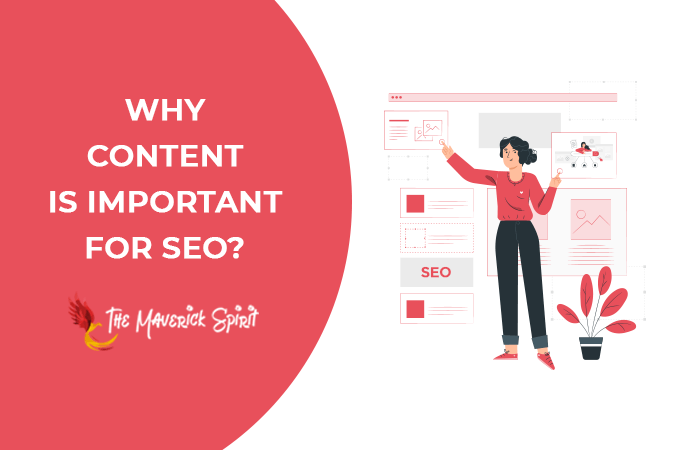Content and SEO: How Do They Go Together?
In digital marketing, content and SEO (Search Engine Optimization) form both a strong foundation and a pillar.
Content offers the substance or the basis where all marketing strategies are employed. This includes blogs, tutorials, listicles, tips, FAQs, among other content forms.
On the other hand, SEO (Search Engine Optimization) is the technical aspect that makes internet assets strategic and compliant. SEO, for instance, is responsible for making content to rank highly on a search engine results page.
Content and SEO, therefore, are complementary parts of your overall digital marketing plan.
Below is a more detailed brief on how these two concepts intertwine.
Table of Contents
1. Link Building

One of Google’s algorithms for SEO requires the presence of quality links in a site or content.
SEO provides a basis for evaluating the effectiveness and the presence of quality links.
The recommendations from such audits and exercises are employed using content marketing strategies.
For proper SEO, website owners must create linkable content in the following ways –
(a) External backlinks
Top-quality content is valued by users which help it to be referenced on other websites. Google crawling bots also discovers how the users perceive this particular content—it’s consequently rewarded with priority ranking.
(b) Internal links
SEO dictates that well-interlinked content improves user navigation. Google crawlers also discover such content with ease, and this reflects in high search engine rankings.
Content helps integrate SEO plans and recommendations. Whereas, link-building and quality links are part of the larger marketing strategies.
2. Labeling of Content

SEO experts recommend that content must be properly labelled to give users a quick and easy experience.
This is also a part of the search engine updates and algorithms that play a role in ranking content highly.
Below are some recommendations for SEO that are put into practice using content: –
(a) URL labels
Labelling of the URL leading to an article helps improve SEO rank. This includes keyword inclusion and a proper description of the content.
(b) Headings
Content provides a basis for inserting headings that create traffic traction on the internet. This also helps to integrate other SEO insights such as popular search queries on a certain topic.
(c) Images

SEO recommends that any accompanying content form, such as images, videos, infographics, and media, should be well-described.
This involves the inclusion of tags, keywords, and other pointers that can help improve user and robot experience.
SEO audit is responsible for identifying weak lines on websites or blogs.
Labeling of content in a strategic manner is one way of implementing the proposals.
3. SEO Needs Well-Aligned Content
Content is king in digital marketing. The articles created help to communicate with the clients and help attract traffic to your site.
This is also the ultimate lead magnet and helps to transition customers from one stage of the customer journey to the next.
These are the demands of SEO that content needs to fulfill –
(a) Freshness
Google and other search engines prefer fresh content. This is in response to the evolving changes and demands of customers.
For instance, a blog dealing with events needs to frequently update new and upcoming meet-ups. This is a positive score in SEO terms.
(b) Keywords
Keywords are one of the gauging criteria to determine the suitability of content.
This involves the generation of responsive content and fulfilling user requirements. SEO experts scan your content for keyword stuffing—this doesn’t sit well with optimizing your content.
SEO also aims to place keywords in strategic areas like title, metadata, and subheadings. SEO also involves observing the right keyword density.
(c) Relevant content
Content helps in brand awareness and warming leads that are vital for the acquisition of products. Without a scientific analysis of customer intent, content cannot achieve its intended mission.
SEO tools like keyword analyzers are critical for generating user queries and the traffic thereon. They also help create a technical trail to customer movements in the purchase journey.
4. SEO Provides a Technical Diagnosis of User Experience

For websites and other online assets to rank highly in search results, the UX (User experience) must be great.
This includes how easily human traffic navigates the content or how they can discover content in the site, among other things.
The way content is structured helps to achieve this goal.
The quality of images or other forms like infographics must avoid derailing loading speed or the general impression. If users find bad quality content, they’re likely to increase the bounce rate.
Also, issues like robot.txt determine whether there are hidden paths or blocked content in your site.
SEO helps discover such hindrances that can derail discoverability by search engine crawling bots. These create a report that penalizes such sites.
Search engine optimization experts can diagnose non-existent page (404-page error) reports.
Being a common occurrence, this needs to be handled well to improve the user experience. SEO complements the role of content by rectifying such technical aspects.
5. Mobile Friendliness

Creating content is the beginning of digital marketing. Its promotion, accessibility, and inclusion of other diverse users provides the icing on the cake.
Currently over 2 billion people—51% of internet users—access the web using mobile devices. This number is expected to rise to 75% by 2025.
The above figures indicate the need to ensure that your content can be accessed with ease by mobile devices.
SEO can help diagnose the responsiveness of a website and content on mobile devices.
- Some parameters, such as mobile bounce rate, mobile time on site, tablet bounce rate, and tablet time on site, can provide insights into the responsiveness of a page.
These aspects are also captured by search engines and they determine the overall user experience.
Conclusion
On a fundamental level, content forms a basis for marketing strategies in the digital world.
SEO helps align the online assets like blog pages and articles for a better user and search engine robot experience.
Content that’s well-aligned with SEO recommendations, like mobile responsiveness, quality content, and labeling, performs well.
Other technical aspects like link-building can only be achieved using a consistent content plan.




Hey Ankita,
You proved why content is an essential thing in WordPress. Nowadays, people lack content in SEO, and they thought it is elementary to write unusual things. Thanks for understanding the value of content to people.